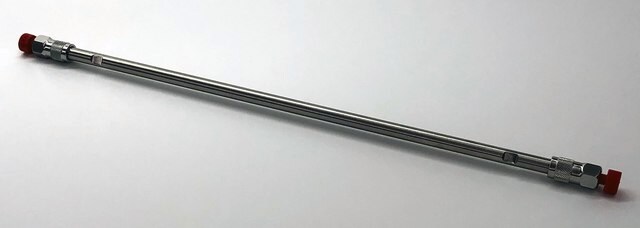GF75170224
Eisen
foil, 50x50mm, thickness 1.0mm, as rolled, 99.99+%
Synonym(e):
Eisen
Anmeldenzur Ansicht organisationsspezifischer und vertraglich vereinbarter Preise
Alle Fotos(2)
About This Item
Lineare Formel:
Fe
CAS-Nummer:
Molekulargewicht:
55.85
MDL-Nummer:
UNSPSC-Code:
12141721
PubChem Substanz-ID:
NACRES:
NA.23
Empfohlene Produkte
Assay
99.99%
Form
foil
Hersteller/Markenname
Goodfellow 751-702-24
Widerstandsfähigkeit
9.71 μΩ-cm
Größe × Dicke
50 x 50 mm × 1.0 mm
bp
2750 °C (lit.)
mp (Schmelzpunkt)
1535 °C (lit.)
Dichte
7.86 g/mL at 25 °C (lit.)
SMILES String
[Fe]
InChI
1S/Fe
InChIKey
XEEYBQQBJWHFJM-UHFFFAOYSA-N
Allgemeine Beschreibung
For updated SDS information please visit www.goodfellow.com.
Rechtliche Hinweise
Product of Goodfellow
Hier finden Sie alle aktuellen Versionen:
Analysenzertifikate (COA)
Lot/Batch Number
Leider sind derzeit keine COAs für dieses Produkt online verfügbar.
Wenn Sie Hilfe benötigen, wenden Sie sich bitte an Kundensupport
Besitzen Sie dieses Produkt bereits?
In der Dokumentenbibliothek finden Sie die Dokumentation zu den Produkten, die Sie kürzlich erworben haben.
Qiu et al.
Physical review letters, 85(7), 1492-1495 (2000-09-06)
FeF (2) films are grown by the reaction of XeF (2) and SeF (6) with iron foil. The growth initially follows the Mott-Cabrera parabolic rate law, indicating that the process is diffusion limited. At a certain film thickness, however, the
Jun-Won Jang et al.
Water science and technology : a journal of the International Association on Water Pollution Research, 59(12), 2503-2507 (2009-06-23)
Zero valent iron has been successfully used for the degradation of a wide range of contaminants. However, this reaction of using ZVI particle produces a large quantity of iron sludge. To solve the problem, we report the synthesis of self-organized
Arnold L Demain et al.
Applied microbiology and biotechnology, 73(1), 55-59 (2006-04-20)
When tetanus toxin is made by fermentation with Clostridium tetani, the traditional source of iron is an insoluble preparation called reduced iron powder. This material removes oxygen from the system by forming FeO(2) (rust). When inoculated in a newly developed
Thomas A Russo et al.
Infection and immunity, 82(6), 2356-2367 (2014-03-26)
Hypervirulent (hypermucoviscous) Klebsiella pneumoniae (hvKP) strains are an emerging variant of "classical" K. pneumoniae (cKP) that cause organ and life-threatening infection in healthy individuals. An understanding of hvKP-specific virulence mechanisms that enabled evolution from cKP is limited. Observations by our
Laura M van Staalduinen et al.
Proceedings of the National Academy of Sciences of the United States of America, 111(14), 5171-5176 (2014-04-08)
The enzymes PhnY and PhnZ comprise an oxidative catabolic pathway that enables marine bacteria to use 2-aminoethylphosphonic acid as a source of inorganic phosphate. PhnZ is notable for catalyzing the oxidative cleavage of a carbon-phosphorus bond using Fe(II) and dioxygen
Unser Team von Wissenschaftlern verfügt über Erfahrung in allen Forschungsbereichen einschließlich Life Science, Materialwissenschaften, chemischer Synthese, Chromatographie, Analytik und vielen mehr..
Setzen Sie sich mit dem technischen Dienst in Verbindung.

